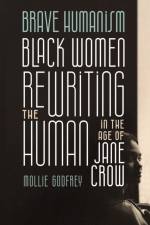2 177
Rhetorical Economies of Whiteness examines the interplay of rhetoric, whiteness, and economics-attending not only to how economic arrangements that sustain whiteness are rhetorically enacted and legitimated but also to how rhetoric itself operates as an economy to give identities exchange value. Case studies across the volume illustrate how economic and class structures incentivize adherence to whiteness as both an identity formation and a form of symbolic capital. Some contributors investigate issues of public policy-analyzing judicial appointments, housing, and education-while others explore intersections of politics, sports, news and entertainment media, and culture. Wide-ranging, complementary methods-textual and discourse analysis, archival approaches, ethnographic interviewing and focus groups, personal narratives and storytelling-exemplify the insights gleaned from different approaches to studying intersections of race and economics across and within societies. Taken together, these essays help to explain how whiteness so quickly adapts to evade antiracist challenges and why investments in whiteness are so difficult to dislodge.Contributors:Godfried Asante, Robert Asen, Charles Athanasopoulos, Paulami Banerjee, Anne Bonds, Linsay M. Cramer, Derek G. Handley, V. Jo Hsu, Kelly Jensen, Casey Ryan Kelly, Kyle R. Larson, George (Guy) F. McHendry Jr., Thomas K. Nakayama, Adedoyin Ogunfeyimi, Rico Self, Stacey K. Sowards, Corinne Mitsuye Sugino












